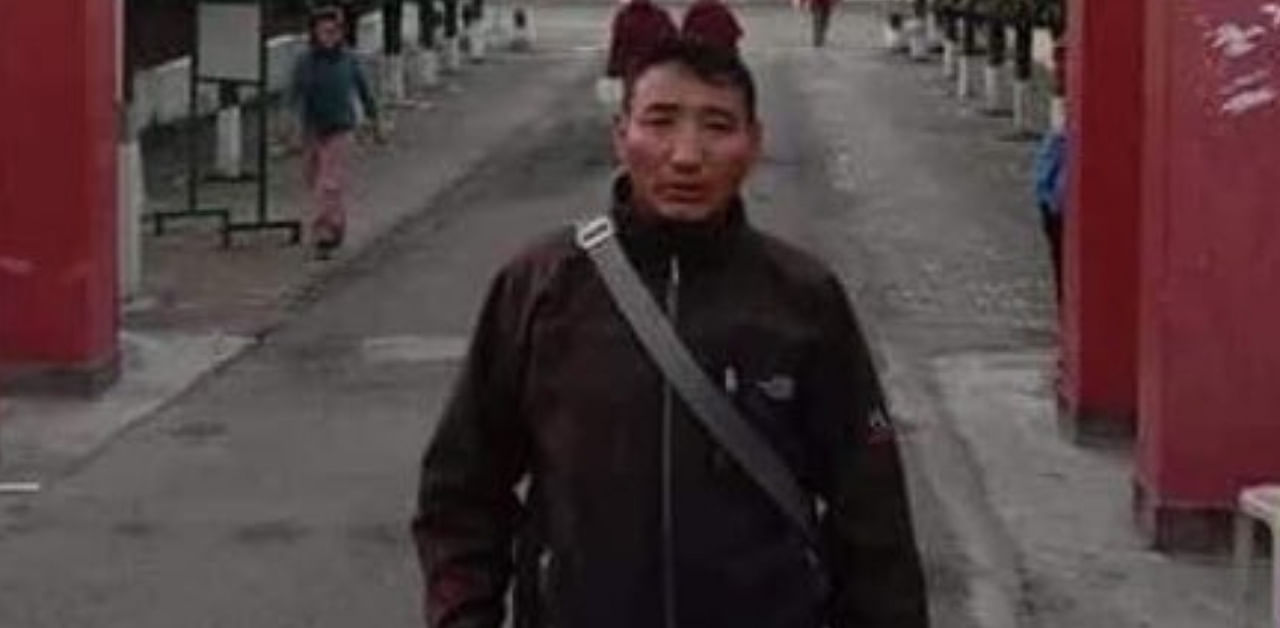
The mortal remains of Nyima Tenzin draped with both the tricolour and the snow-lion flags lying at Sonamling in Ladakh send out a not-so-subtle message to Beijing – Tibetans living in India have joined the Indian Army to resist expansionism of China.
Tenzin sacrificed his life during the pre-emptive operation the Indian Army carried out on the southern bank of the Pangong Tso (lake) in eastern Ladakh in the late hours of Saturday and the early hours of Sunday to foil a fresh move by the Chinese People’s Liberation Army (PLA) to transgress into the territory of India.
The 51-year-old was a Company Leader in the Indian Army’s Special Frontier Force (SFF) – an elite paramilitary force, which was raised during the India-China war in 1962 with most of its recruits being young refugees and guerrilla soldiers from Tibet. It was always kept under a shroud of secrecy.
The valour of the SFF soldiers was never officially acknowledged. Nor were the supreme sacrifices they made on the battlegrounds.
There is nothing official about the death of Tenzin, who served the SFF for 33 years. The Ministry of Defence issued a statement in New Delhi after the Indian Army thwarted the Chinese PLA’s move on the south bank of the Pangong Tso lake, but it had no word about his martyrdom or the role of the SFF in the overnight operation.
Tenzin is survived by his wife and three children, who received his coffin from the Indian Army in Leh on Tuesday, said Lhagyari Namgyal Dolkar, a member of the Tibetan Parliament in Exile based at Dharamshala in India.
His mortal remains now wait at his home for the funeral – draped not only with the tricolour of India but also with what was the official flag of the government that existed in Lhasa before Tibet was occupied by the Chinese PLA in the early 1950s. Tibet’s snow-lion flag has been banned by the Chinese Government long back. It, however, remains the icon of the Tibetans’ resistance against the communist country’s rule over their homeland.
Tenzin Lodhen, another 24-year-old SFF soldier, was also injured while taking part in the Indian Army’s operation against the Chinese PLA on Saturday-Sunday night.
The SFF, a.k.a. “Establishment 22”, is under the administrative control of the intelligence establishment of India, although it is placed under the command of the Indian Army, whenever it is required to carry out covert operations. With most of its men still refugees or descendants of refugees from Tibet, New Delhi continues to keep the SFF under wraps, just as it never officially acknowledges the existence of the Tibetan Government in Exile in India – ostensibly to avoid complications in its diplomatic relations with China.
The SFF, however, fought shoulder-to-shoulder with the Indian Army against the Pakistan Army, both during the 1971 Liberation War of Bangladesh as well as the 1999 Kargil War.
“Death is always tragic, but what makes me and all the Tibetans proud is that another of our own has made the supreme sacrifice for India – a nation that made us a part of it ever since His Holiness (Dalai Lama) had to leave Tibet, a nation that we will always remain grateful to,” Namgyal Dolkar told the DH on Wednesday.
“He gave his life for #India, out of Love for #Tibet,” Tibetan activist Tenzin Namgyal posted on Twitter. “My salute to Nyima Tenzin!” tweeted former Indian Army chief General Ved Malik, who recalled the valour of the personnel of the SFF (a.k.a Vikas Battalions) during the Kargil War.
"Nothing can be more humiliating to China than India's use of its Special Frontier Force comprising mainly Tibetan exiles to foil the latest PLA incursion," eminent strategic affairs analyst Brahma Chellaney commented on the microblogging website.
The Indian Army apparently factored in the familiarity of the SFF personnel with the terrain along Ladakh-Tibet border region, when it decided to deploy the highland warriors to support operations to counter the Chinese PLA’s expansionist moves along the LAC. It came just after China claimed that thousands of youths in its Tibet Autonomous Region joined the PLA amid the military stand-off along the disputed boundary with India.
The message India wanted to send out with deployment of the SFF along the LAC was not lost on China. “We oppose any country, of course, that includes India, to provide any facilitation or venue to forces advocating independence of Tibet,” Hua Chunying, the spokesperson of the Ministry of Foreign Affairs of the Chinese Government, said when a journalist asked for her comment on the reports about the Indian Army deploying the SFF along the LAC. “As to the relationship between the exiled Tibetans and the Indian Army, I am also very curious,” she added during a routine briefing in Beijing.
